“ ‘Suppose’ was one of Harry Chapman’s most-used words, to the irritation at times of his friends and relatives. He liked to suppose where others stated, secure in their certainties. He favoured suppositions, those delicate stepping stones towards truth.’ ”
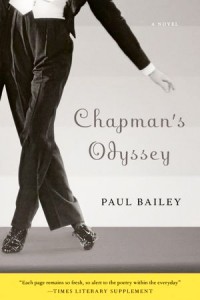 Seventy-year-old Harry Chapman has just been admitted to a hospital for diagnosis and treatment of an illness from which he has been suffering alone at home. Confined to bed for the foreseeable future, Harry, a writer, cannot help sharing his thoughts and “suppositions” with the reader and sometimes the hospital staff, recreating conversations and bringing family members, friends, and literary characters to life. But Harry does not stop there. Books, poems, plays, and paintings are also a vivid part of his on-going reality, and some of Harry’s favorite literary characters and his most admired fellow writers cross the borders of reality and fiction to work their way into his memories of real people and real events. His attention constantly jumps around, but it is through these seemingly random memories, stories, favorite poems, and observations about life that author Paul Bailey succeeds in bringing Harry to life and creating a “real” person for the reader.
Seventy-year-old Harry Chapman has just been admitted to a hospital for diagnosis and treatment of an illness from which he has been suffering alone at home. Confined to bed for the foreseeable future, Harry, a writer, cannot help sharing his thoughts and “suppositions” with the reader and sometimes the hospital staff, recreating conversations and bringing family members, friends, and literary characters to life. But Harry does not stop there. Books, poems, plays, and paintings are also a vivid part of his on-going reality, and some of Harry’s favorite literary characters and his most admired fellow writers cross the borders of reality and fiction to work their way into his memories of real people and real events. His attention constantly jumps around, but it is through these seemingly random memories, stories, favorite poems, and observations about life that author Paul Bailey succeeds in bringing Harry to life and creating a “real” person for the reader.
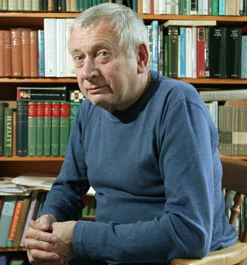
When he first meets his doctor, Harry remarks that the doctor “reminds him” of someone, finally deciding that the doctor looks like the self-portrait by Filippino Lippi in the fresco at the Brancacci Chapel of Santa Maria del Carmine in Florence. When the doctor gives him an injection, Harry begins “chatting” with Bartleby, the Scrivener, in Herman Melville’s novel of the same name. When a priest visits him at his bedside, Harry indicates that he has his own spiritual resources, then conjures up George Herbert, John Donne, and Marcus Aurelius, among others, and “serenades” one of the nurses with Shakespeare’s Sonnet 18, “Shall I compare thee to a summer’s day…” Other poems follow for other nurses and other occasions.
Among H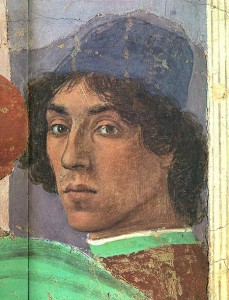 arry’s recollections, however, are gloomy memories of his dour and hurtful mother Alice, “the perpetual dampener of every prideful feeling, her bottomless bucket of ice-cold water perpetually at hand.” Though he also remembers his father’s last day alive, during which his father sees the ghosts of his mates in the trenches of war, it is his mother whose constant presence so upsets him. “It was because he was here – trapped, and dependent upon nurses and doctors – that his restless mind was taken up with old slights, old scores, old barriers to his once longed-for liberty,” he explains to the reader. And as he asks Dr. Pereira to cure him, he is surprised to be answered by Pip, whom he asks whether he ever married Estella in Great Expectations. He recalls visiting the cemetery in Calcutta where one of Dickens’s sons was buried; remembers Henry IV, Part I, in which he once acted; calls up Jack Hawkins to act as his own lookout, instead of Long John Silver’s; and remembers the friend who introduced him to Babar and Celeste, at whose elephant wedding he imagines Fred Astaire dancing with Celeste (whom Astaire compliments, saying that she has “a finer feel for the music, for the rhythm, than Ginger Rogers”).
arry’s recollections, however, are gloomy memories of his dour and hurtful mother Alice, “the perpetual dampener of every prideful feeling, her bottomless bucket of ice-cold water perpetually at hand.” Though he also remembers his father’s last day alive, during which his father sees the ghosts of his mates in the trenches of war, it is his mother whose constant presence so upsets him. “It was because he was here – trapped, and dependent upon nurses and doctors – that his restless mind was taken up with old slights, old scores, old barriers to his once longed-for liberty,” he explains to the reader. And as he asks Dr. Pereira to cure him, he is surprised to be answered by Pip, whom he asks whether he ever married Estella in Great Expectations. He recalls visiting the cemetery in Calcutta where one of Dickens’s sons was buried; remembers Henry IV, Part I, in which he once acted; calls up Jack Hawkins to act as his own lookout, instead of Long John Silver’s; and remembers the friend who introduced him to Babar and Celeste, at whose elephant wedding he imagines Fred Astaire dancing with Celeste (whom Astaire compliments, saying that she has “a finer feel for the music, for the rhythm, than Ginger Rogers”).
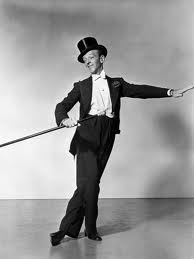
As thoughts of Virginia Woolf, Malcolm Lowry, and many other authors drift through Harry’s befogged consciousness, he is also meeting new (real) people on the ward and revealing more private information about his own life – his friends, his enemies, and his lovers. Harry becomes increasingly lifelike for the reader as he awaits the arrival of his closest friend, Graham Weaver, due to arrive soon from Sri Lanka.
Though Harry can be a literary showoff, the reader comes to understand that the books he has read are part of who he is, and as he has shown with his poems to the nurses, the world of literature is the best way he knows to communicate with the outside world. As an author, “[Harry] read voraciously, then judiciously, and found his writing voice by rejecting the voices of those he was tempted to impersonate,” and he used to become frustrated by what he considered the inadequate literary backgrounds of his students. As he tells “Shakespeare’s ship-boy, Jack,” “You cannot write well unless you have read well. If you read trash, God help you, trash will be the result of your labours, if labours they are.”
Ultimately, he tells his students, “No one [can] possibly teach another person to write imaginatively. If you have no powers of observation and no insight into character and no flair for language, you cannot expect to be taught them.”
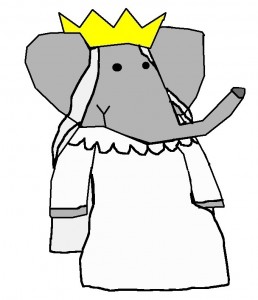 The play on words of the title, with the reminders of George Chapman’s ground-breaking translations of the Iliad (1598) and Odyssey (1616) and of romantic poet John Keats’s “On First Looking Into Chapman’s Homer” (1816), establish the fact that Harry Chapman’s stay in the hospital is his own odyssey, and though his memories do not seem to have one-to-one parallels with the voyage of Odysseus, they are as varied, traumatic, and even, sometimes, as captivating for him as those of Odysseus in his twenty years of wandering. Because Harry is bed-ridden for the entire duration of the novel and is not fully lucid during his stay, the reader must filter and process his reminiscences in order to understand and participate in his life.
The play on words of the title, with the reminders of George Chapman’s ground-breaking translations of the Iliad (1598) and Odyssey (1616) and of romantic poet John Keats’s “On First Looking Into Chapman’s Homer” (1816), establish the fact that Harry Chapman’s stay in the hospital is his own odyssey, and though his memories do not seem to have one-to-one parallels with the voyage of Odysseus, they are as varied, traumatic, and even, sometimes, as captivating for him as those of Odysseus in his twenty years of wandering. Because Harry is bed-ridden for the entire duration of the novel and is not fully lucid during his stay, the reader must filter and process his reminiscences in order to understand and participate in his life.
Chapman’s Odyssey is a delightful and involving treasure trove for English majors and lovers of the classics, but it may be frustrating for those who do not share these interests or background. The dry humor and irony which accompany the limited (mostly intellectual) “action” of the novel depend fully upon the connections to literature; to the children’s  books of the past, like Treasure Island; to famous paintings; to actors and entertainers from fifty years ago; and in one case, to Wimbledon stars of the past. Harry’s need to be loved is almost palpable, and as the reader shares his memories and envisions him-/herself in circumstances similar to Harry’s, the novel takes on a poignancy which cuts through all the intellectual posing to Harry’s inner core. Ultimately, author Paul Bailey has created a novel in which Harry becomes an everyman on an odyssey, one in which he seeks answers to life’s most basic questions of what life means and whether the journey has been worthwhile.
books of the past, like Treasure Island; to famous paintings; to actors and entertainers from fifty years ago; and in one case, to Wimbledon stars of the past. Harry’s need to be loved is almost palpable, and as the reader shares his memories and envisions him-/herself in circumstances similar to Harry’s, the novel takes on a poignancy which cuts through all the intellectual posing to Harry’s inner core. Ultimately, author Paul Bailey has created a novel in which Harry becomes an everyman on an odyssey, one in which he seeks answers to life’s most basic questions of what life means and whether the journey has been worthwhile.
Photos, in order: The author’s photo appears on http://www.guardian.co.uk
The portrait of Filippino Lippi from the Brancacci Chapel of the Santa Maria del Carmine is seen on http://www.paradoxplace.com
Fred Astaire is featured on http://psicologitaliani.wordpress.com/
Queen Celeste (from Babar) is on http://www.fanpop.com
The cover of Chapman’s Odyssey is featured on http://press.princeton.edu
ARC: Bloomsbury USA
